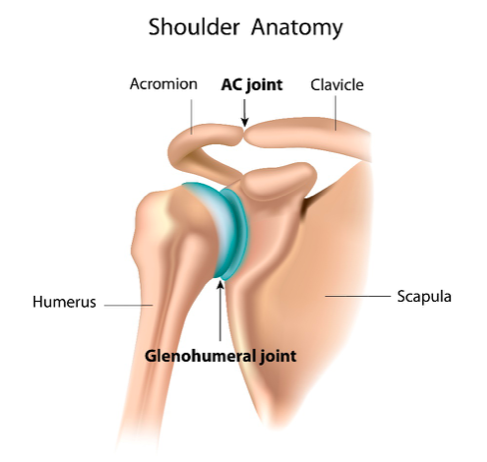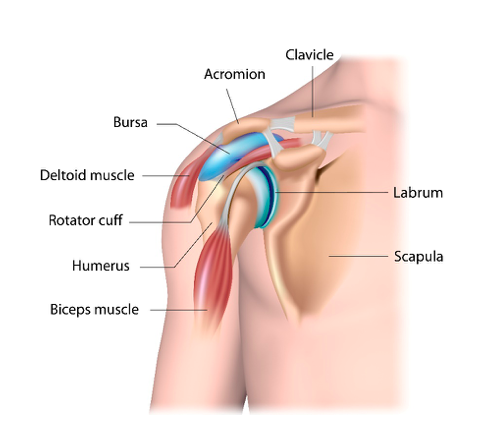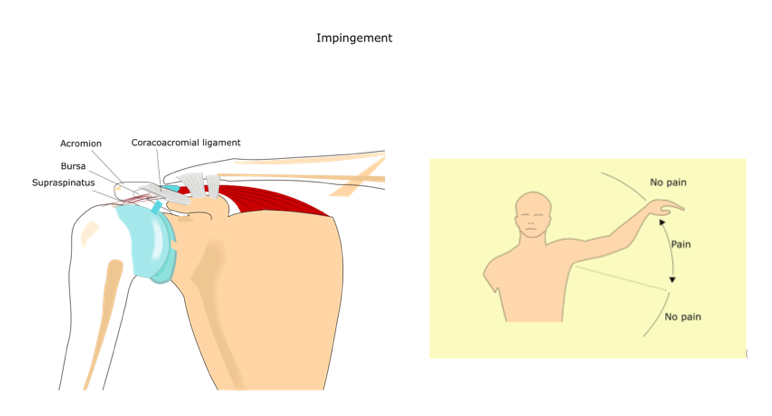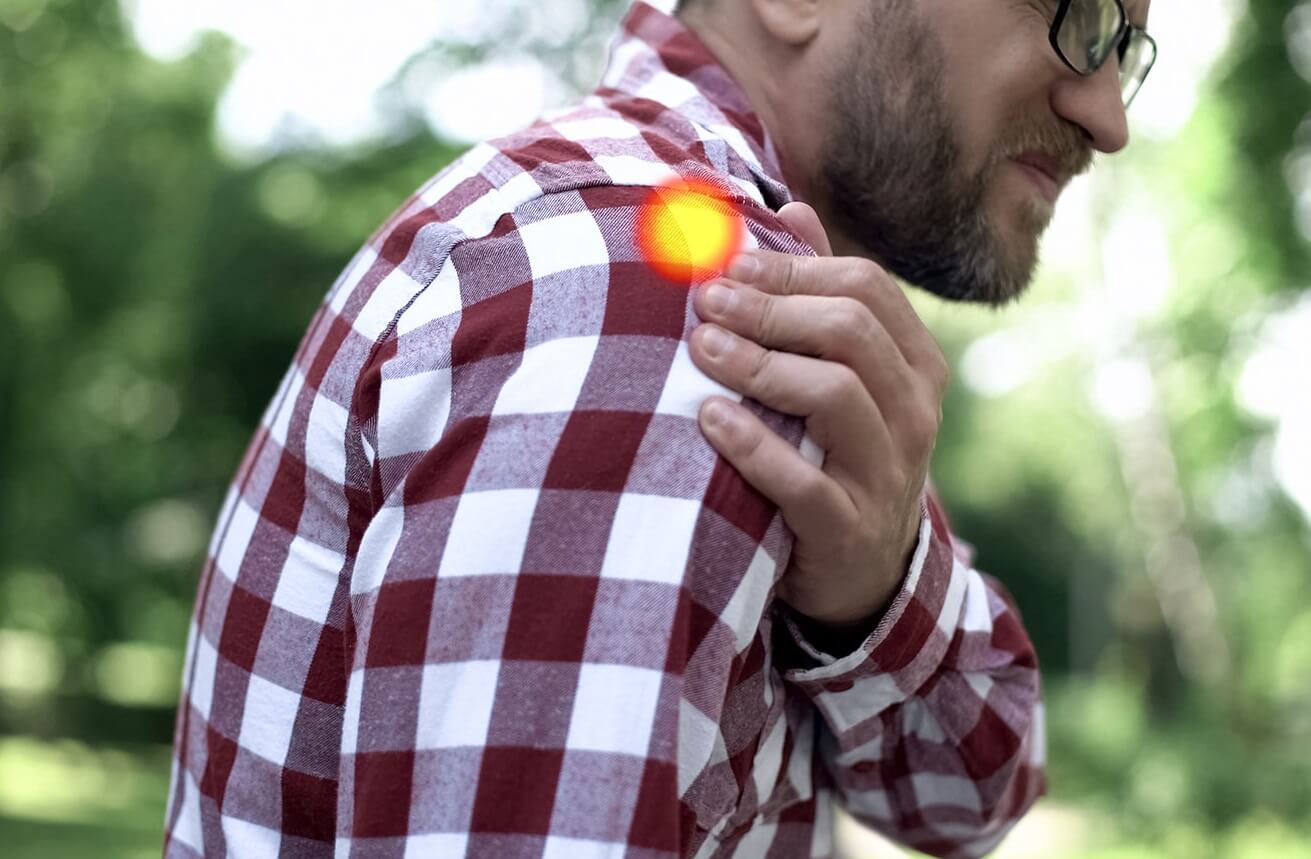What is shoulder impingement?
Shoulder impingement is an umbrella term for a group of conditions that cause shoulder pain. These include:
To diagnose these conditions accurately requires an ultrasound scan. This is carried out as part of your initial appointment, you do not need an MRI or an x-ray. Shoulder impingement is treated with conservative management and a course of physiotherapy to reduce your pain, restore full movement and strengthen the appropriate muscles. If this fails to improve your pain, an ultrasound guided steroid injection and can provide fast, effective pain relief.
What are the symptoms of shoulder impingement?
The symptoms of shoulder impingement are:
- Pain located at the shoulder and into your arm
- Pain that is made worse when you lift your arm to the side i.e., a painful arc
- Pain is worse at night, you are unable to lie on the painful shoulder and often the pain will keep you awake at night
If this sounds like your pain, read on…
What other conditions can mimic osteoarthritis of the shoulder?
If this does not sound like your pain there are other conditions that can mimic the pain of shoulder impingement such as:
- acromio-clavicular (AC) joint osteoarthritis
- frozen shoulder
- shoulder joint osteoarthritis
- sub-acromial bursitis
- calcific tendinopathy
- rotator cuff pain
Shoulder impingement versus frozen shoulder?
Shoulder impingement causes pain in the shoulder, whereas frozen shoulder typically causes pain and stiffness in the joint. Both conditions can cause pain at night, but frozen shoulder is known to cause more severe pain, especially if you move the arm too quickly in a certain direction. Once you have triggered the pain in frozen shoulder, it can take a long time to settle. Shoulder impingement can affect people of all ages. Frozen shoulder normally effects though aged 40-60 (females> males).
Anatomy of the shoulder
The shoulder joint is the most mobile joint of the body and performs a wide range of precise movements, allowing you to interact with the surrounding environment. The shoulder consists of four joints:
1. Glenhumeral joint
2. Acromioclavicular joint
3. Sterno-costal joint
4. Scapula (shoulder blade) – thoracic joint (between the rib cage and the shoulder blade)
Two of which are the most common causes of pain, the glenohumeral joint and the acromioclavicular joint.
- The glenohumeral joint. This joint is created by the ball-shaped end of the humerus (long bone of the upper arm) and a shallow cup (called the glenoid) which is located on the shoulder blade (scapular). These two bones form a ball and socket joint and is responsible for producing the wide variety of movements possible at the shoulder.
- Acromioclavicular joint. Is a small joint which is located at the top of your shoulder and connects the collarbone (clavicle) to the acromion (part of the shoulder blade). This joint produces small, simple sliding movements required to adjust the shoulder blade position during movement.
The glenohumeral and acromioclavicular joints work together to stabilise the shoulder whilst time performing complex, smooth movements critical to nearly all our daily activities.

Shoulder disorders are the second most common cause of musculoskeletal pain and can present in patients of all ages. Research has shown that one third of the population will suffer from shoulder pain at some point during their life (Dong et al., 2015).
The causes of shoulder pain are complex and multifactorial. Common causes of shoulder pain include:
- Glenohumeral joint osteoarthritis
- Acromioclavicular joint osteoarthritis
- Frozen shoulder
- Shoulder impingement syndrome
This article will focus on shoulder impingement. Shoulder impingement syndrome is the most common cause of shoulder pain and has been reported to be the main contributing factor in over 65% of all patients suffering from shoulder pain (Dong et al., 2015).
Shoulder impingement syndrome is an umbrella term used to describe pain arising from the rotator cuff (small set of muscles used to steer and guide the shoulder joint during movement) and/or the sub-acromial bursa (small sac used to reduce friction because during shoulder movement). Research has revealed that shoulder impingement syndrome affects glenohumeral joint movements, with an average of 33% deficit observed in external rotation (rotating your arm outwards) and 29% deficit observed in abduction (taking your arm up and out to the side) (Clausen et al., 2018).
Within this overarching terminology are a plethora of pathologies which can be responsible for driving your pain.
A surgeon named Mr Neer categorised shoulder impingement syndrome into 3 subsets. These subsets are as follows:
- Stage I – symptoms are characterised as reversible and often associated with tendinitis. Stage I is most commonly observed in patients up to 25 years old.
- Stage II – is characterised by tendinopathic change within the rotator cuff or thickening of the subacromial subdeltoid bursa, occurring due to repetitive episodes of tendinitis (stage I). Stage II shoulder impingement is most commonly observed in patients between 25 and 40 years of age.
- Stage III – characterised by rotator cuff or long head of bicep tendon tears or ruptures. These are often associated with bony changes to the humeral head. Stage III impingement patients are often aged 40 years old and over.
Causes of shoulder impingement syndrome include the following pathologies, please click on the hyperlinks below to find out more information on each condition:
- Rotator cuff tendinitis/tendinopathy
- Rotator cuff tears (partial or full)
- Subacromial bursitis
- Calcific tendinitis
- Long head of bicep tendinitis/tendinopathy

Symptoms associated with shoulder impingement syndrome include:
- Pain located at the side of your shoulder which may refer down towards the elbow.
- Pain that is made worse when you lift your arm i.e. a painful arc (see image below)
- Pain is typically worse at night and may affect your ability to sleep.

How do we diagnose a shoulder impingement syndrome?
The initial formulation of a diagnosis of shoulder impingement syndrome is a highly specialised physiotherapist and requires the completion of a clinical assessment.
A clinical assessment starts with an interview. This is designed to reveal how, when, why and what started your pain. You will be asked a series of questions concerning activities that irritates and relieves your symptoms, as well as how your pain is affecting your daily life. A full medical history is also discussed to ensure the exclusion of other medical conditions such as systemic inflammatory disorders including rheumatoid arthritis.
Physical assessment
Physical assessment is used to locate the source of your symptoms and if any physical factors may be contributing to your pain. A physical assessment includes:
- Postural assessment of your shoulder joint, shoulder blade and spine.
- Shoulder range of motion and testing.
- Shoulder strength testing.
- Pain provocation shoulder impingement testing – a series of tests designed to reveal the presence of shoulder impingement by gently irritating your symptoms are routinely used. Although this is uncomfortable it is an essential part of a clinical assessment.
- Palpation (feeling) structures within the shoulder to locate the source of the symptoms.
- Functional testing. If your pain is present during a specific task, you may be asked to perform this. This is designed to assess how you move.

A clinical diagnosis of shoulder impingement syndrome is able to confirm pain associated with this condition; however, it is unable to determine which structure or pathology is causing your shoulder impingement.
Diagnostic imaging is required to obtain a full and accurate diagnosis of the cause of your shoulder pain. Obtaining a correct diagnosis is critical, allowing for the most appropriate and effective treatment strategy to be selected for you.
Diagnostic Musculoskeletal Ultrasound
Research has revealed diagnostic musculoskeletal ultrasound imaging is as accurate as magnetic resonance imaging (MRI) at identifying rotator cuff issues, bursitis and bicep tendon pathology (accuracy rates of up to 100%) and is considered the gold standard imaging technique for diagnosing the root cause of shoulder impingement syndrome (Ardic et al., 2006). Diagnostic musculoskeletal ultrasound has also been proven to be highly effective at revealing swelling and inflammation associated with tendinitis and bursitis and has the capability of dynamically assessing the structural shoulder during movement.
All clinicians at Complete are fully qualified physiotherapist and musculoskeletal sonographers and are highly experienced at assessing shoulder impingement syndrome. During your initial assessment you will be provided with an accurate diagnosis using both clinical assessment and a formative diagnostic musculoskeletal ultrasound scan. We do not charge extra for the ultrasound scan and you do not require a GP referral. This will determine the provision of an evidence-based treatment program to help relieve your symptoms and allow you to return to the activities you enjoy.
If you would like more information or would like to book an appointment please contact us on 0207 4823875 or email injections@complete-physio.co.uk.
How do we treat shoulder impingement syndrome?

The majority of patients suffering with shoulder impingement syndrome respond positively to conservative treatment. Conservative treatment is routinely managed by a physiotherapist and often includes the following modalities:
- Activity modification and postural advice to allow your pain and symptoms to settle.
- Specific strengthening exercises for the muscles surrounding your shoulder.
- Targeted stretching exercises for tight muscles.
- The application of corrective physiotherapy tape. This is used to help correct shoulder position and allow a reduction in pain during movement.
- Soft tissue techniques are often used to manage pain and symptoms and allow you to complete your exercise program. This often includes massage or acupuncture.
There are a few simple tips and tricks you may like to try yourself:
- Avoid aggravating your pain. This may mean taking a rest from playing tennis or modifying your daily activities to allow your shoulder rest and your pain to settle.
- Try applying a small bag of frozen peas (for 15 minutes), wrapped in a towel, over your shoulder to relieve pain and inflammation.
- Make sure you are sitting correctly at work. Poor posture during sitting can irritate shoulder impingement syndromes. Many offices have access to a work ergonomic assessment service or computer program which can help.
- Try some gentle shoulder stretches if they are painfree
- Try some gentle rotator cuff strengthening exercises using a light exercise band.
- The application of anti-inflammatory gel such as Voltarol may help reduce symptoms. Please discuss this with your pharmacist first.
What happens if conservative management does not work?
If your pain has remained persistent for over 3 months and you have completed a course of physiotherapy including a rehabilitative exercise program then an ultrasound guided injection may be an appropriate option for you.
Injection therapy has been routinely used with the musculoskeletal medicine for decades to treat persistent shoulder impingement pain. It is particularly effective if your symptoms are affecting your sleep or stopping you from partaking in a physiotherapy treatment.
Current research has revealed that ultrasound guided shoulder injections are significantly more accurate than and more effective than landmark injection techniques (Daniels et al., 2018). The current consensus is that guided injections for the shoulder are better tolerated by patients, less painful and have fewer post injection complications.
All injections at Complete are carried out using ultrasound guidance. During the completion of a guided injection a diagnostic ultrasound machine is used to provide real-time imaging of the target tissue. The needle is then accurately guided, directly to the source of your pain.
There are three ultrasound-guided injection options available for treating shoulder impingement syndrome and therefore an accurate diagnosis is essential for understanding which technique is most appropriate for you. Please click on the hyperlinks below to find out more concerning each of the injection techniques available for treating shoulder impingement syndrome:
No injection should be considered as a standalone treatment. Research has shown significantly better outcomes when injection therapy is combined with physiotherapy rehabilitation and therefore, Complete highly recommend you start a course of physiotherapy within 2 weeks after receiving an injection. If you would like more information or would like to book an appointment please contact us on 0207 4823875 or email injections@complete-physio.co.uk.
At Complete all injection procedures are undertaken under ultrasound guidance. Our team of highly experienced clinicians are fully qualified physiotherapist, musculoskeletal sonographers, injection therapists and independent prescribers. On your first appointment you will be provided with a formal diagnosis and if appropriate be offered an ultrasound-guided injection. We provide a same day service on all guided injection techniques. You do not need to be referred by doctor. You are able to self-refer directly into our service. If you would like more information or would like to book an appointment please contact us on 0207 4823875 or email injections@complete-physio.co.uk.



Leave A Comment